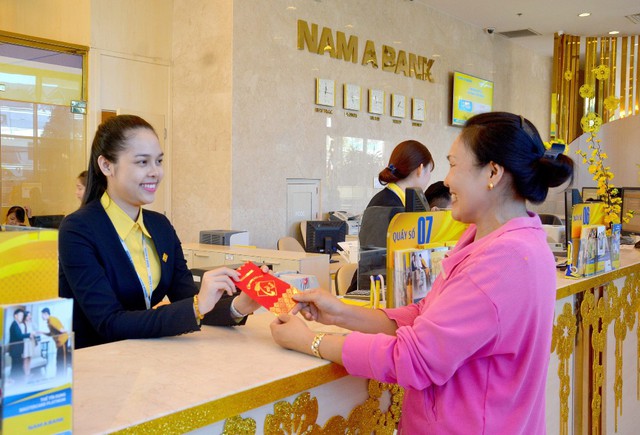In specific, interest rates for 1-2 month terms have increased to 3.1%/year, 3.8%/year for 3-month terms, and 4%/year for 4-5 month terms.
The 6-month term interest rate has been adjusted to 4.6%/year, while the 7-8 month term now stands at 4.8%/year.
The 9-month term rate has increased from 4.7%/year to 5.1%/year, and the 10-11 month term has also seen a 0.3% increase to 5.1%/year.
The 12-13 month term has increased by 0.3% to 5.4%/year, while the 14-17 month term has increased by 0.2% to 5.5%/year.
Interest rates for 18-36 month terms have also increased by 0.2% to 5.7%/year. This is also the highest deposit interest rate currently offered by Nam A Bank.
Nam A Bank is the latest bank to raise deposit interest rates in early June, joining LPBank, TPBank, Bao VietBank, and GPBank.

Illustrative image
Previously, around 20 banks had increased interest rates in May, with some banks adjusting rates multiple times.
The trend of increasing deposit interest rates began in late March and became more widespread in April and May. However, the increase has been mainly driven by private joint-stock banks, while the state-owned group of Vietcombank, BIDV, VietinBank, and Agribank has maintained historically low deposit interest rates.
According to analysts, the low growth in deposits from individuals and businesses in the first months of the year, coupled with the recovery of credit growth, has prompted many banks to raise deposit interest rates to ensure a balance in capital sources.
Deposit interest rates are forecasted to face upward pressure in the second half of the year, but the increase is not expected to be significant as credit demand during this period is not likely to surge. Moreover, the fact that the state-owned bank group – which accounts for nearly half of the total deposits in the system – is still maintaining historically low rates suggests that deposit interest rates are unlikely to increase sharply in the near future.















